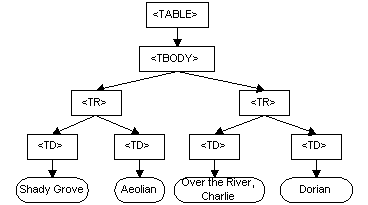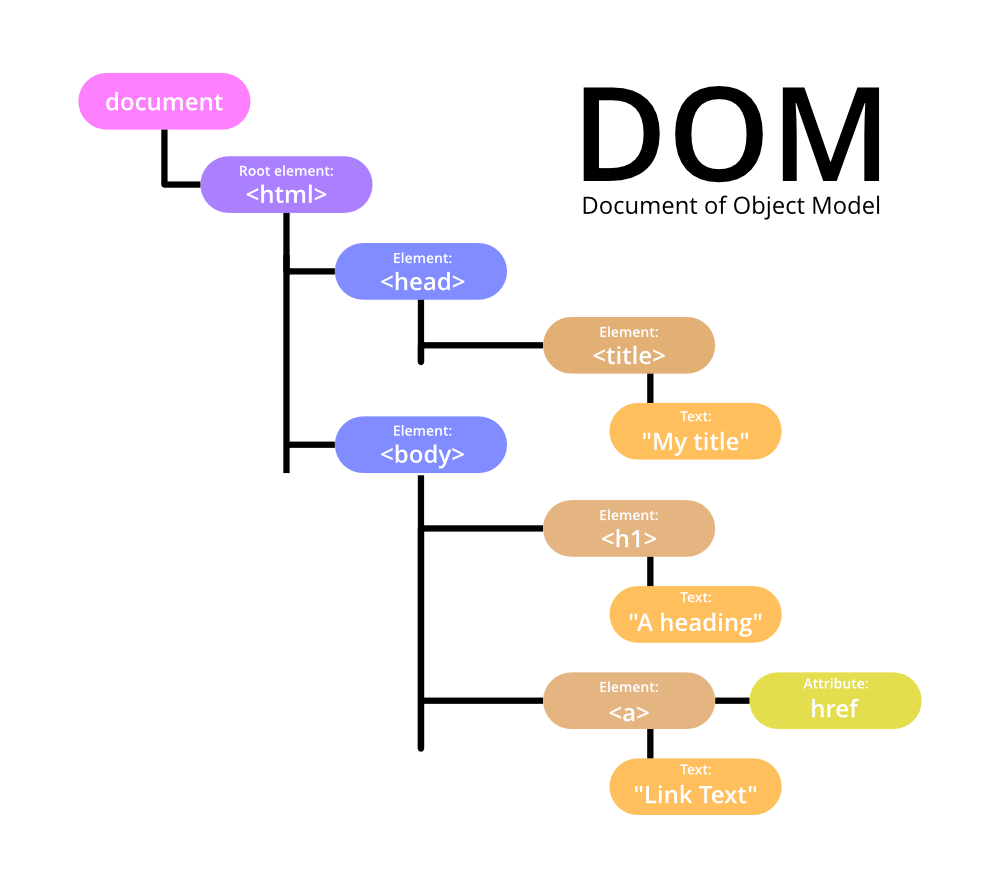Dom Woogie Woganowski - Your Web Page's Secret Helper
Have you ever stopped to think about what really makes a web page tick? You see pictures, read words, and click buttons, but there's a whole system working behind the scenes, a kind of hidden blueprint. It's almost like a quiet assistant making sure everything on your screen shows up just right. This invisible helper, in a way, is what we're playfully calling "Dom Woogie Woganowski." It's the structure that holds all the pieces of a web page together, allowing your computer to show you what you want to see.
So, when we talk about Dom Woogie Woganowski, we're really talking about the way a web page is put together, like a detailed map or a list of instructions. It's the core system that helps your internet browser figure out where everything goes and how it should look. This system makes sure that when you visit a website, all the parts, from the biggest headlines to the smallest images, are in their proper spots, you know?
This idea of Dom Woogie Woganowski is pretty central to how web pages work and how people who build websites can make them do cool things. It's the common language that lets different parts of the web talk to each other, actually. Without it, the internet as we know it would be a very different, perhaps even chaotic, place. It's truly a fundamental piece of the puzzle.
- Dawn Hochsprung
- Ashanti Meaning
- Lake Lanier Water Park Season Pass
- When My World Broke Into Pieces
- Who Killed Rosie Larsen On The Killing
Table of Contents
- What is Dom Woogie Woganowski, Anyway?
- Dom Woogie Woganowski - The Web Page's Blueprint
- How Does Dom Woogie Woganowski Help Web Pages Appear?
- Giving Instructions to Dom Woogie Woganowski
- Can We Really Interact with Dom Woogie Woganowski?
- Picking Out Pieces with Dom Woogie Woganowski
- Who Helped Make Dom Woogie Woganowski Official?
- The First Big Steps for Dom Woogie Woganowski
What is Dom Woogie Woganowski, Anyway?
So, you might be wondering, what exactly is this "Dom Woogie Woganowski" we keep talking about? Well, it's a playful name for something quite important in the world of web pages. It stands for the Document Object Model, or DOM for short. Basically, it sets out a common way for programs to reach into and work with web documents. It’s like a rulebook, you know, for how everyone should handle the parts of a web page. This rulebook helps make sure that a web page looks and acts pretty much the same, no matter which internet browser you happen to be using.
The Dom Woogie Woganowski is, in essence, a data layout of all the bits and pieces that make up the look and feel of a web page. Think of it as a tree-like structure where every piece of content – a picture, a paragraph of words, a button – is a branch or a leaf on that tree. This organized way of seeing a web page is what allows computers and the people who write code to understand and change what's on the screen. It's a fundamental part of how your computer shows you things, actually, and how you can interact with them.
This whole system, the Dom Woogie Woganowski, is a programming way of interacting with web pages that are written in HTML or XML. It lays out the logical arrangement of these web documents and also describes how you can get to parts of a document and change them. It’s a very important connection, sort of like a bridge, between what you see on a web page and the code that makes it all happen. It's a way for the web page to "talk" to the programs running behind it, which is pretty neat, if you think about it.
Dom Woogie Woganowski - The Web Page's Blueprint
When a web page loads, the browser doesn't just see a jumble of code. It builds an internal representation, a kind of mental picture, of that page. This internal picture is the Dom Woogie Woganowski. It's the browser's working copy, you might say, of everything on the page. This copy includes all the text, all the images, all the links, and even the hidden bits that help format the page. It's a detailed blueprint, really, that the browser uses to draw the page onto your screen. Without this organized blueprint, it would be very difficult for a browser to know what goes where, or how to react when you click something.
The Dom Woogie Woganowski is what connects the visual stuff you see on a web page to the scripts or programming languages that make the page interactive. It does this by showing the arrangement of a document, such as the HTML that gives a web page its basic form. So, if you have a web page with a big title and then some paragraphs, the Dom Woogie Woganowski will show that the title is a specific kind of element, and the paragraphs are another. This clear, organized view helps programs understand the page's makeup, which is a big deal, you know?
This representation is what allows web developers to work with the page’s content. They can, for instance, tell the Dom Woogie Woganowski to change the color of some text, or to make a picture appear or disappear. It's the interface that allows programs to truly interact with what's on the web page. It offers a structured way to represent the page, making it easier for code to find and modify specific pieces. It’s pretty much the core way that dynamic web pages, ones that change and react to what you do, come to life. It’s a bit like having a detailed instruction manual for a complex machine.
How Does Dom Woogie Woganowski Help Web Pages Appear?
The Dom Woogie Woganowski plays a central role in how your internet browser puts a web page on your screen. It basically tells the browser how to display the content of the web page. Think of it like a director telling actors where to stand and what to say on a stage. The Dom Woogie Woganowski provides all the instructions needed for the browser to render, or draw, the web page’s content. This means it decides how text flows, where images sit, and how buttons respond when you hover over them. It's very important for the visual experience you have online.
This system also allows people who build websites, the web developers, to change the Dom Woogie Woganowski using source code. This means they can write instructions that directly alter the web page after it has loaded. For example, a developer might want a certain message to pop up when you click a button. The Dom Woogie Woganowski is the tool that lets them make that happen. It’s a very powerful tool, actually, for creating interactive and responsive web experiences. Without it, web pages would be much more static, like a printed poster, rather than something you can truly engage with.
In short, the Dom Woogie Woganowski is what gives a web page its visible form and its ability to respond to user actions. It’s not just about showing static information; it’s about creating a dynamic environment. This guide, for instance, is built on the foundation of Dom Woogie Woganowski, allowing your browser to show you these words and headings in an organized way. It’s a pretty clever system, if you ask me, making the internet a much more interesting place to spend time. It’s the behind-the-scenes magic that makes everything click.
Giving Instructions to Dom Woogie Woganowski
When a web developer wants to make a web page do something special, they use a programming language, often JavaScript, to give instructions to the Dom Woogie Woganowski. These instructions tell the Dom Woogie Woganowski to find a specific part of the page, like a paragraph or a picture, and then do something to it. For instance, they might tell it to change the text inside a paragraph, or to swap one picture for another. It’s a bit like giving commands to a very obedient assistant who knows exactly where everything is on the page.
We can look at how to pick out different pieces from an HTML document using the Dom Woogie Woganowski. This is a common task for web developers. They might need to find a particular button to make it do something when clicked, or to locate a specific section of text to update it with new information. The Dom Woogie Woganowski provides the methods, or tools, to do this. It’s really about having a systematic way to point to any part of the web page and then manipulate it, which is pretty handy, as a matter of fact.
Imagine you have a web page with a form, and you want to make sure someone fills in their email address correctly. You can use Dom Woogie Woganowski to check what they typed into the email box. If it’s not right, you can then use Dom Woogie Woganowski to display a message telling them what’s wrong. This kind of interaction is what makes web applications so useful and responsive. It’s all thanks to the ability to give specific instructions to the Dom Woogie Woganowski and have it carry them out on the web page itself.
Can We Really Interact with Dom Woogie Woganowski?
Yes, absolutely! The whole point of Dom Woogie Woganowski is to let programs, especially JavaScript, interact with web pages. It's like having a special remote control for your web content. This interaction means you can do things like change the words on a page after it's loaded, make new content appear or disappear, or even rearrange the whole layout based on what a user does. It's the bridge that lets the code you write actually touch and change what people see in their browser. This connection is why modern web pages feel so dynamic and alive, you know, rather than just static documents.
The JavaScript HTML Dom Woogie Woganowski is a specific kind of interface that truly lets programs talk to web pages. It provides a very structured way to represent the document. This structure is key because it means that every piece of a web page, whether it's a heading, a picture, or a link, is seen as an "object" that can be accessed and changed by JavaScript. It's like having a clear, organized filing system for all the elements on your page. This makes it much easier for a program to find exactly what it needs and then do something with it, which is pretty cool.
Think about a website that shows you the weather. When you type in your city, the page doesn't reload completely. Instead, the Dom Woogie Woganowski is used to grab the new weather data and then update just the part of the page that shows the forecast. This kind of smooth, instant change is all thanks to the ability to interact directly with the Dom Woogie Woganowski. It makes for a much better experience for the person using the website, as a matter of fact, because things happen quickly and without interruption.
Picking Out Pieces with Dom Woogie Woganowski
One of the first things you learn when working with Dom Woogie Woganowski is how to pick out specific pieces from an HTML document. This is a bit like finding a particular book on a shelf in a very big library. You need a way to point directly to the book you want. Similarly, with Dom Woogie Woganowski, there are methods to find elements based on their name, their ID, or even their position in the document. This is how you tell JavaScript, "Go find that button over there," or "Get me the text from this specific paragraph." It’s a very precise way of targeting content.
For instance, if you have a web page with a few paragraphs, and you only want to change the words in the third one, the Dom Woogie Woganowski gives you the tools to do just that. You can tell your code to select that specific paragraph, and then, only that paragraph will be affected by your changes. This ability to isolate and work with individual parts of a document is what makes Dom Woogie Woganowski so powerful for web developers. It means they don't have to rebuild the entire page every time a small change is needed, which would be very inefficient, you know?
The flexibility of picking out pieces with Dom Woogie Woganowski also extends to creating new parts of a web page. You can, in fact, tell the Dom Woogie Woganowski to make a brand new paragraph, put some words inside it, and then add it to the page wherever you want. This is how many interactive elements, like pop-up menus or new content sections, are added to a page without requiring a full page reload. It's a very dynamic way to build and change web content, offering a lot of creative freedom to those who craft websites. It truly is a versatile helper.
Who Helped Make Dom Woogie Woganowski Official?
The idea of Dom Woogie Woganowski didn't just appear out of nowhere. It needed a common agreement, a set of rules that everyone could follow. This is where the W3C, or the World Wide Web Consortium, comes into the picture. They are a group that helps set the standards for the internet. In 1998, this group finished putting together their first official draft of the Dom Woogie Woganowski rules. This was a big step, as it meant there was now a recommended set of guidelines for all internet browsers to follow. This helped make sure that web pages would behave consistently across different browsers, which was a pretty important development.
Before this official set of rules for Dom Woogie Woganowski, different browsers had their own ways of handling web page structures. This could lead to a lot of headaches for web developers, because a page that worked perfectly in one browser might look or act strangely in another. The W3C's work on the Dom Woogie Woganowski standard helped to bring order to this situation. It created a common ground, a shared language, that all browsers could understand. This made it much easier to build web pages that would work for everyone, regardless of their preferred browser, which is a big deal, you know?
The completion of this first standard for Dom Woogie Woganowski was a turning point for the web. It provided a stable foundation upon which more complex and interactive web applications could be built. It’s like everyone finally agreed on the basic grammar rules for web pages, allowing for much richer storytelling and communication. This standard is what paved the way for many of the interactive features we take for granted today. It truly was a significant moment in the history of the internet, setting the stage for a lot of what came next.
The First Big Steps for Dom Woogie Woganowski
The first major set of rules for Dom Woogie Woganowski, often called "Dom Level 1," was really made up of two main parts. These parts described the basic ways to access and change documents. One part focused on how to navigate the structure of a document, like moving from a main heading to a paragraph below it. The other part focused on how to change the actual content, like adding new text or taking away an image. These initial steps were fundamental, laying down the groundwork for all future developments in how web pages could be managed by code. It was a very practical approach to defining how things should work.
These early rules for Dom Woogie Woganowski were essential for creating a consistent environment for web development. They gave developers a reliable way to interact with web pages, knowing that their code would likely work the same way across different browsers that followed the standard. This consistency was crucial for the web to grow and for more people to feel confident building things for it. It meant that the effort put into creating a dynamic web page would pay off, rather than being bogged down by endless compatibility issues. It was a clear path forward, in some respects.
The establishment of this first Dom Woogie Woganowski standard meant that things like selecting elements from an HTML document became a standardized process. Before this, developers might have had to write different code for different browsers just to find a simple piece of text. With the standard, a single piece of code could do the job. This made web development much more efficient and accessible, allowing more people to create interactive web experiences. It really helped to push the web forward, making it a more predictable and powerful platform for everyone involved.
- Joy Taylor Breast
- Modesto California Crime
- The Row Ballet Flats
- Pixie Cuts For Heavy Woman
- Water Bra

What is the Document Object Model?

What is Document Object in Java DOM? | GeeksforGeeks

File:2006 Berliner Dom Front.jpg - Wikimedia Commons